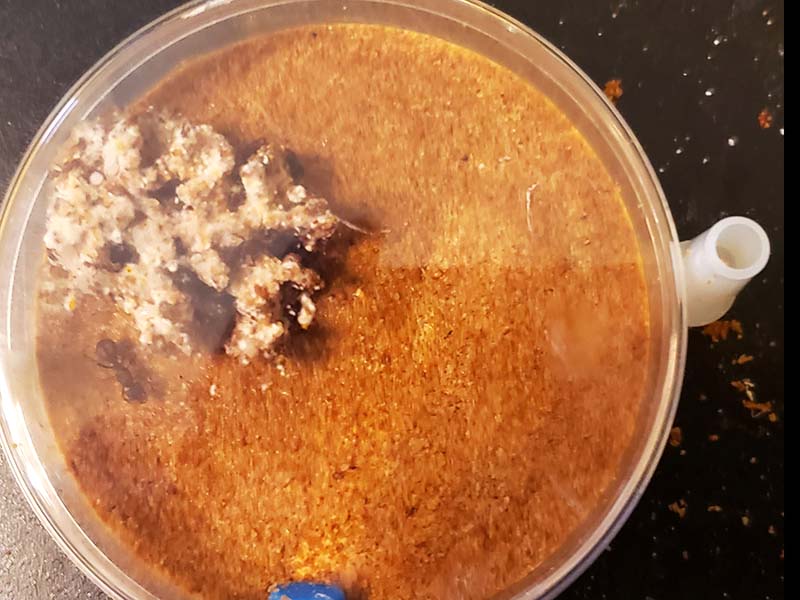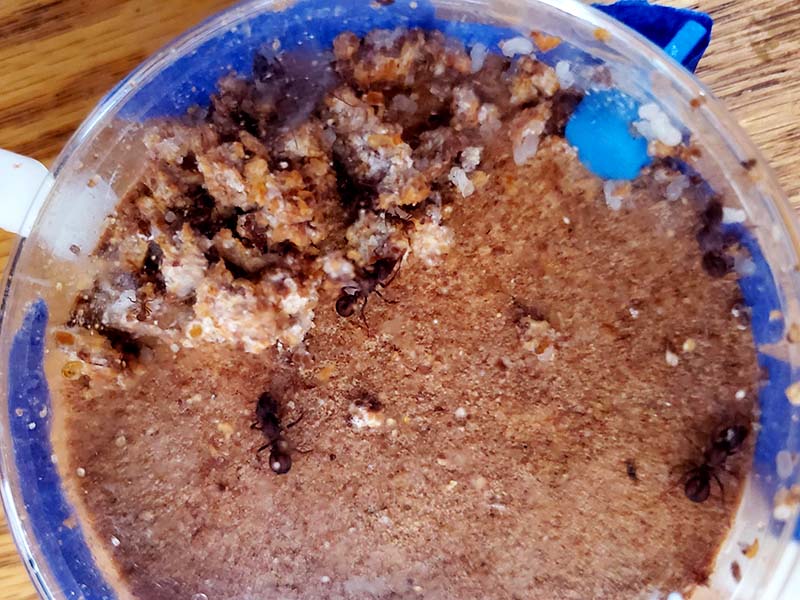Acromyrmex Versicolor – The Desert Leafcutter
Disclaimers and FAQ’s
Why are leafcutters special?
These are not your typical ants! These ants have sharp jaws that cut leaves and flowers into tiny pieces. They carry the plant matter back to their nest where they cut the pieces even smaller and place it in their “fungus garden”. The decaying pieces make the fungus grow and this is the food source for the colony. Each colony contains one or more queen ants that lay eggs into the fungus. After some time (months to years), most colonies will only have one remaining queen who was deemed fit by the workers. The other queens are killed off one by one and we aren’t sure exactly how they decide who to keep and who to let go.
Where do they get their fungus?
Queens acquire the fungus from the colony they are born into. Prior to embarking on their mating flight, each queen collects a small amount of fungus, known as a fungal pellet, and stores it in her mouthparts. Upon completing mating and excavating a chamber, the queen deposits the pellet into the soil and proceeds to lay eggs within it. Throughout the founding phase, the queen diligently cares for the fungus. Witnessing its transformation from a tiny speck smaller than a sesame seed to the size of a ping pong ball is a truly captivating process.
How do I take care of them?
A care guide is included with every purchase. Here’s the short version: keep the thermostat at or below 82 degrees Fahrenheit. The nest needs to remain humid so it’s important to follow the watering schedule. The nests we sell have “water ports” on opposite ends and that’s where you add a small amount of water every 3 or 4 days, or a large amount of water every two weeks. The outworld is where you will add leaves and flowers. We have found that the colonies prefer dried vegetation but it’s OK to experiment with fresh. Just make sure there aren’t any little bugs on the flowers or leaves. We have also found that steel cut oats are popular with the ants. They are able to cut them into smaller pieces to add to the fungus.
Do you have a live arrival guarantee?
Yes we do. You can look at the fine print here. If for some reason, you are unhappy with your order, please reach out to us by replying to the order confirmation email that was sent to you. We will work with you.
Note: fungus will not look as awesome on arrival
We believe that next-day-arrival shipping, combined with an insulated box and a temperature-maintaining gel pack, is an effective way to ship our products. However, the fungus garden can get disrupted during shipping, and may not look as good upon arrival. Nevertheless, the ants are skilled at repairing the garden, and it will typically look great again in a week or so.


Note: colonies may contain workers not biologically related to the queens
When capturing a large number of leafcutting ant queens, it can be challenging to keep the fungus pellet intact, so we often need to provide some donor fungus to each group of queens. It is difficult to remove all of the eggs from the fungus, so it is uncertain whether every queen in each colony is fertile. The ants are captured after they have mated and while they are digging, and only the ones with wings removed are captured.
Are these queens polygynous?
Yes, these ants are polygynous, meaning that they have multiple queens in a single colony. However, the queens do not live together permanently and the multiple queen arrangement is usually temporary. Eventually, only one queen will remain and take over the colony. The temporary coexistence of multiple queens in the same colony is called pleometrosis. The process by which the ants choose and maintain their queen(s) is still not fully understood, adding to the mystery and intrigue surrounding these fascinating insects.